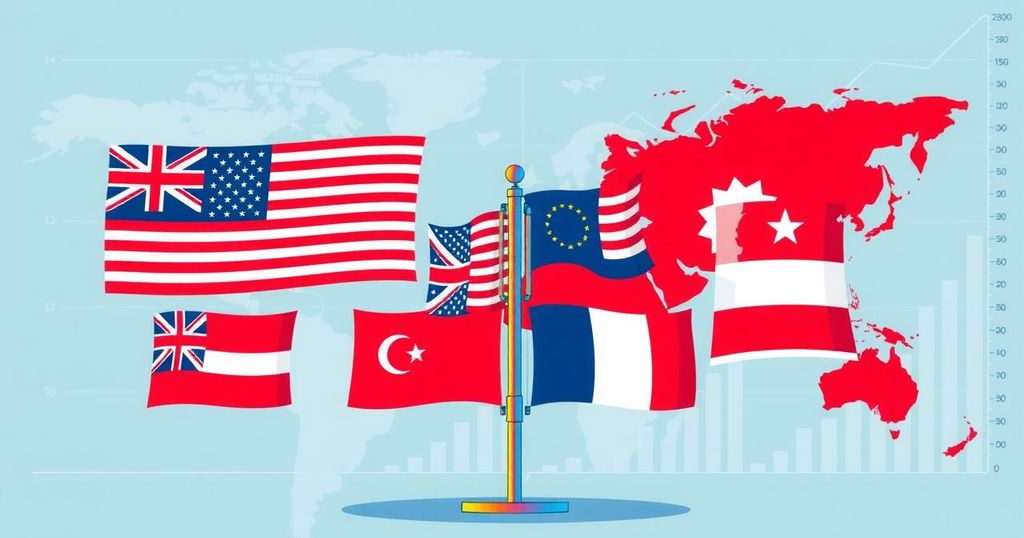Trump’s April 2 Tariffs: Exclusions and Impacts on Global Trade

On April 2, President Trump announced new tariffs of at least 10%, excluding Russia and North Korea. The tariffs impose significant rates on countries like China and the EU, with the aim of protecting US industries. Canada and Mexico are partially exempt, while Cambodia and India face high tariffs respectively.
On April 2, President Donald Trump announced new tariffs of at least 10% on various economies, notably excluding Russia, North Korea, Cuba, and Belarus. During his “Liberation Day” speech at the White House, he explained that the 34% tariffs on China, 20% on the EU, and 24% on Japan aim to protect US industries from historical economic exploitation. Trump emphasized that the tariffs were a necessary step against decades of trade imbalances.
Despite the new measures, Canada and Mexico were not included in the new tariffs completely. Existing tariffs would remain, particularly a 25% duty on goods related to fentanyl from these nations, along with a 10% tariff on Canadian energy and potash. However, goods under the US-Mexico-Canada Agreement remain exempt from the tariffs, maintaining trade flows under prior agreements.
The April 2 tariff structure involves a baseline 10% tariff for all imports, with heightened rates targeting specific countries. Cambodia faces the highest at 49%, followed by Vietnam at 46% and Sri Lanka at 44%. Also, India faces a 26% discounted reciprocal tariff while still charging a substantial 52% on US exports. Trump acknowledged his close relationship with Indian Prime Minister Narendra Modi but insisted on fairer trade practices to balance these costs.
President Trump’s April 2 tariffs mark a significant shift in US trade policy aimed at protecting domestic industries. By imposing hefty duties on major economies and excluding specific nations from these tariffs, Trump highlights persistent trade imbalances. While Alberta and Mexico enjoy some exemptions, the updated structure underscores the administration’s focus on reciprocal trade agreements amid ongoing international economic negotiations.
Original Source: www.timesnownews.com







